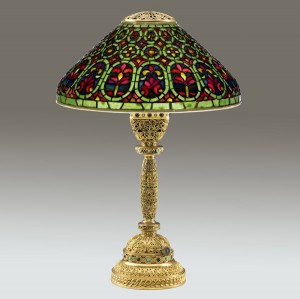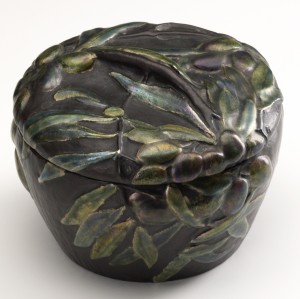
David Rago
Q. How has the recession affected your business?

Tiffany Studios Venetian table lamp, lot 409, June, 2009

Tiffany enamel on copper box, lot 393, June, 2009
Q. What areas show strength? Weakness?
A. Good things, in good condition, at reasonable prices, seem quite strong. Middle range things with condition issues, offered at regular prices, seem to languish. We just sold the estate of an old school New Hope dealer. The material had been off the market for 25 years and the family put no price restrictions on estimates and reserves. The sale was 100% sold and hammered near the high estimate plus the buyer’s premium of 20%. There was almost no glass in the collection, so this is relevant only in how it informs the marketplace. But we had a room full of active bidders, plus 100 people on the phone, plus 500 people on the Internet, for two solid days. It was like nothing had changed. But one thing HAD changed seriously, and that was the expectation of the seller.
Q. What do you foresee for the coming year?
A. The coming year is at the mercy of the economy, which is at the mercy of I don’t know what. Right now people (at least the ones buying art) mostly have more money than they did five years ago but they feel like they have less because they aren’t as rich as they were a year or two ago. Whether you own stock or real estate or middle range art, you in fact have less. Until people begin to feel comfortable with both their level of wealth AND the state of the economy, I don’t see great changes in the marketplace.
Please send me your suggestions or questions about art glass, lamps, Louis Icart, shows, auctions, etc. If it’s interesting, I’ll answer your question in a future blog entry.
Call or write and let me know what you would like to buy, sell, or trade. philchasen@gmail or 516-922-2090. And please visit my website. chasenantiques.com

When do you do apprasels?